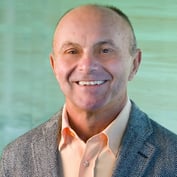In retirement planning, “the first hurdle for financial advisors to overcome is to help people comprehend and internalize risk, uncertainty, and ranges of possibilities,” Nobel laureate William F. Sharpe tells ThinkAdvisor in an interview. “That’s the toughest problem of all.”
The Stanford University Graduate School of Business finance professor emeritus, 87, in 1996 co-founded Financial Engines, considered the first successful robo-advisor for 401(k) sponsors.
Sharpe, who developed the capital asset pricing model (CAPM) and the Sharpe ratio, encapsulates the four principles of effective financial advice as diversify, economize, personalize and contextualize.
As for the financial advisor of the future, he maintains that “really good software” will help in retirement planning, but “I don’t think you’re going to do without human advisors.” It will be a combination of humans and machines, he forecasts.
In 2019, Sharpe wrapped up years of work on a wide-ranging book on retirement financing and investing. Called “Retirement Income Analysis with Scenario Matrices,” it is available free, along with a suite of software, on his website.
Sharpe, the 1990 Nobel winner in economic sciences, taught at Stanford for many years and in the 1980s had his own research consulting firm.
Then, in 1996, concerned that most people with 401(k) plans were at sea about making the complex investing decisions the plans require, he co-founded Financial Engines to provide automated retirement planning advice to 401(k) sponsors and their plans’ participants.
In 2018, Financial Engines was sold for $3 billion to the private equity firm Hellman & Friedman, which folded it into its Edelman Financial Services unit, renaming it Edelman Financial Engines.
In the interview, Sharpe expresses horror at today’s negative interest rates, particularly on Treasury Inflation-Protected Securities (“That goes against everything the textbooks say”) and what the rates augur for most other types of investments.
ThinkAdvisor recently interviewed Sharpe, who was speaking by phone from his home in Carmel, California. In discussing one of his theories, “adaptive asset allocation policies,” he argued that it calls for assuming “more risk than the average bear. And everything works out nicely.”
Here are highlights from the interview.
THINKADVISOR: What’s one major aspect about the U.S. economy that worries you?
WILLIAM F. SHARPE: I am absolutely freaked out by interest rates. Most bizarre, in particular, are Treasury Inflation-Protected securities’ — TIPS — rates, which are negative. Some maturities are negative 1% or 1.5%. It’s crazy!
I think one should presume that all other expected returns — on mutual funds and what have you — are commensurately lower than they used to be. That’s absolutely scary.
Who knows what actual inflation will be, but the TIPS rates are negative, and that goes against everything the textbooks say.
Tell me about the graph concerning this issue and annuities that you recently reproduced on your blog.
It shows the interest rate on long-term Treasurys and how much you get per year from an immediate annuity.
The two look remarkably similar. But it’s not surprising, because the insurance company pays the annuity out of a bond portfolio.
What other big challenges do pre-retirees need to take into consideration?
You’ve got to have some notion of a range of things that could happen [in retirement]. Nobody can answer the question with a single number: How much will I have to live on? — because nobody knows precisely what inflation will be.
How should financial advisors answer when clients ask it, then?
The first hurdle to get over, which is really hard, is to help people comprehend and internalize risk, uncertainty and ranges of possibilities. That’s the toughest problem of all.
People should understand in the accumulation phase, if they keep doing what they’re doing, what the range of possible retirement outcomes might be and see how that might affect their future retirement.
But nobody can tell you what the portfolio is going to do for sure.
Once, when I was talking to a group at a very large organization in the industry, I told them, “You’ve got to get people to think in terms of probability distributions,” whereupon everyone in the room laughed: “People can’t understand probability distributions,” they said. “You’ve got to give them a number.”
But there isn’t a number unless you buy an annuity. If not, there’s no single number of how much you’re going to have to live on in retirement.
What’s your profile of the financial advisor of the future?
I hope it will be something like the Financial Engines that I helped create [in 1996]. I haven’t been involved in the firm for almost 20 years. So I’m talking about what it was [earlier].
Should human advisors be worried about being replaced by algorithms?
I don’t think you’re going to do without human advisors for people who are saving for retirement, spending in retirement, buying annuities — whatever.
Most people can use some help from a human. Really good software, yes, but a human at some point [too].









 September 20, 2021 at 04:42 PM
September 20, 2021 at 04:42 PM











